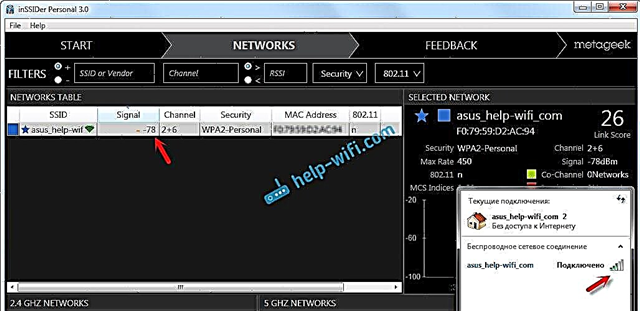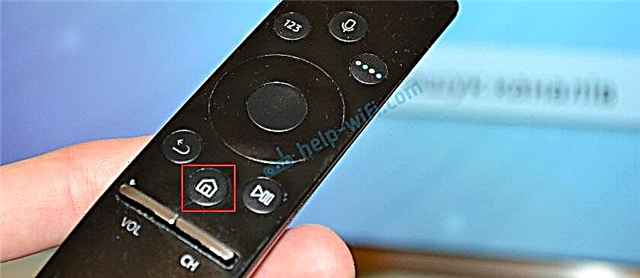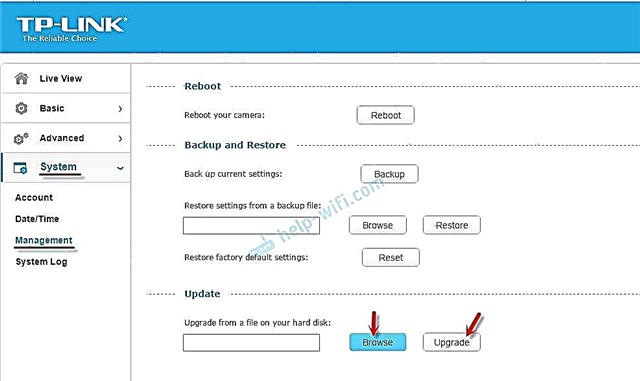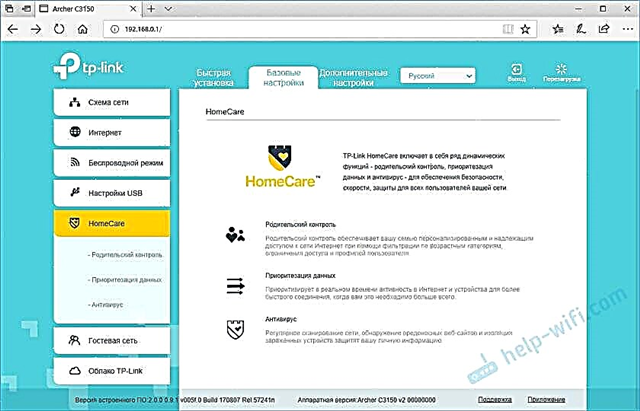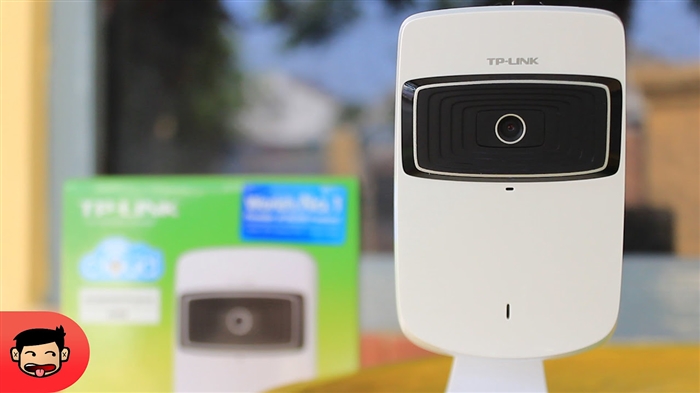The most popular problem in the area of Internet and Wi-Fi connectivity is when a laptop is not connected to a Wi-Fi network through a router. We have a lot of questions on this topic on our website, and even so they often ask what to do if the laptop does not want to connect to the Internet via Wi-Fi? I decided to write a separate article in which to collect all the possible reasons and their solutions related to connecting to Wi-Fi networks.
We will consider laptops and computers with Wi-Fi adapters. Simply put, any computers that can connect to the Internet wirelessly. Also, this article is suitable for Windows 7, Windows 8, and Windows 10. We already have many separate instructions on the site, with solutions to various, specific problems with Wi-Fi, both on laptops with Windows 7 and Windows 10 As I write this article, I will provide links that will definitely come in handy.
In the very question "what to do if the laptop does not connect to Wi-Fi", there is no specific information at all. There can be many reasons why you cannot connect your computer to a router, as well as solutions. And as practice shows, the computer is not always guilty. I will try to consider in order all possible problems so that you yourself can fix them without any problems. Of course, everyone has different laptops, different routers, settings, problems, errors, etc. This undoubtedly complicates the task. It is very difficult to prepare a universal instruction that would help absolutely everyone.
If you have a laptop with Windows installed, there is a Wi-Fi router that distributes the network, and you cannot connect your laptop to the Internet via a wireless network, you cannot figure out what's what, then this article should help you.
Before we move on to any settings, be sure to try connecting your laptop to a Wi-Fi network according to the instructions for Windows 7. If you have Windows 10, then see this manual. Perhaps you will succeed. If the problem persists, the computer could not be connected to Wi-Fi, then see the article further.
All problems with the connection and work of the Internet, I would divide into three categories:
- The laptop does not see the Wi-Fi network at all: the wireless adapter is turned off, the driver is not installed.
- The computer sees the Wi-Fi network, but does not connect to it: incorrect password, "failed to connect", endless connection, etc.
- The laptop connects to the wireless network, but the Internet does not work: "No Internet access", "Limited", yellow triangle on the connection icon in the tray.
You can skip straight to the section you want, depending on what problem you have. Whatever it is, it must definitely fall into one of the categories. It will be much easier and clearer that way.
What if the laptop does not see the Wi-Fi network?
And so, let's start with the problem when your computer does not see wireless networks at all. At the same time, you are sure that your Wi-Fi network is working, there are neighboring networks, and they are displayed on other devices. But, in the list of available networks in Windows, they are not. And the list itself is not. In this case, the connection status (icon on the taskbar) will most likely look like this:

If on the notification bar you see a wireless network icon with a red cross "no available connections", then most likely, there really are no wireless networks in the radius. But, it is possible that this problem appeared for other reasons. In this case, launching "Troubleshooting" can help (you can launch it by right-clicking on the connection icon). I wrote about this using the example of Windows 10, in this article.

Most likely, you have the first case. Red cross near the computer. In this case, the driver is not installed on the Wi-Fi adapter. Or the wireless adapter itself is turned off. Let's first make sure that everything is in order with the driver, since nothing will work without it.
Checking the wireless adapter driver
To do this, we need to go to the device manager. Right-click on "Computer", or "This computer" and select Properties... In a new window, on the left, open device Manager... You can also start in the start menu, in the search, start writing "device manager" and open it in the search results.

In the device manager, we need to open the tab Network adaptersand see if there is a driver for our wireless adapter. You will recognize it by these words in the name: "Wireless" and "Wi-Fi". Here's how it looks roughly:

If everything is in order there, then read this article further. If there is no driver for the Wi-Fi adapter in the device manager, then you need to install it, and everything will work. If you do not know how to install the driver, where to download it, etc., then see the article on installing the driver for the wireless adapter in Windows 7. On Windows 8 or Windows 10, this process will hardly differ.
The main thing is to download and install the driver specifically for your laptop model (or the adapter itself, if you have a USB / PCI adapter), and for your operating system. Well, I recommend downloading the driver from the manufacturers' official websites. If it doesn't work out at all, then you can try programs for automatically installing drivers. But, this is if you cannot find the driver you need and install it manually.
Checking if the wireless adapter is enabled
The adapter itself, through which the laptop connects to Wi-Fi, or rather, in our case, does not connect, can be turned off. This needs to be checked. Right click on the internet connection icon and select "Network and Sharing Center"... In the new window, select Change adapter settings.

There should be an adapter Wireless Network Connection, or Wireless Network - in Windows 10. If there is no such adapter at all, then see above where I wrote about installing the driver. If it is, then it may be turned off. Right click on it and select Enable.

If it is enabled, then you need to check if the wireless connections are disabled on the laptop itself. On every laptop, there is a keyboard shortcut with which you can turn off / on wireless connections (activate the "airplane" mode), including Wi-Fi. This, as I already wrote, is either a keyboard shortcut or some kind of separate switch. For example, on Asus laptops, these are the Fn + F2 keys. You can always find this combination yourself. Key Fn + antenna key, or something like that. You can see separate instructions on how to turn on Wi-Fi on laptops. And if you have Windows 10, then see this instruction https://help-wifi.com/reshenie-problem-i-oshibok/kak-vklyuchit-wi-fi-v-windows-10-kogda-net-knopki-wi -fi-i-oshibka-ne-udalos-najti-besprovodnye-ustrojstva-na-etom-kompyutere /
So we figured out the problems due to which it is impossible to connect to Wi-Fi. When a list of available networks is not displayed. If you've tried everything, but you just can't get your computer to see wireless networks, then it is possible that the adapter itself (hardware) is simply broken, or disabled. This, by the way, often happens after disassembling a laptop and cleaning it from dust. You can describe your problem in detail in the comments, I will try to advise something.
Computer won't connect to Wi-Fi
According to the plan, the second big problem is when the laptop sees and displays a list of available networks, your network is there, but it does not connect to it. At the same time, other devices are connected to your network (it would be nice to check and make sure of this). Let's consider now the most popular problems with connecting to Wi-Fi in Windows 7, and Windows 10. At the eight, everything is the same, there is nothing new there.
First of all, if any error appears, restart your router and computer. Try to reconnect.
Error: "Windows could not connect to ..." and "Unable to connect to this network"
A very popular error that can appear when trying to connect a laptop to a Wi-Fi router.

I wrote here about solving this error in Windows 10. As for Windows 7, there are the same solutions. To be honest, there are not many solutions, not a very clear error, and there is no specific way to get rid of it.
First of all, if you have already connected to this network, then you need to delete it and reconnect. How to do this in Windows 7, I wrote here. In Windows 10, you need to "forget the network".
What else can you try to do: check on a laptop, in propertiesWireless network connection (protocol version TCP / IPv4) whether automatic obtaining of an IP address is set there. In the settings of the router, you can try changing the security type of your network to WPA2-PSK (if you have a different one installed). All this can be done in the router settings. We have detailed instructions on how to change the password on different routers on our website.
There is a separate article on solving the error "Windows could not connect to ..." in Windows 7.
Security key mismatch. Windows does not accept Wi-Fi password
You select your network in the list, specify the password, and Windows writes that the password is incorrect. Well, of course, the computer does not connect to Wi-Fi.

Please try again to see if you really entered the wrong security key. Check if CapsLock is enabled. If the laptop does not want to accept your password in any way, then there are two options: remember the password by looking at it in the router settings, or change the password from your wireless network. See the article: How to find out your Wi-Fi password. You can change the password, for example, to some simple one of numbers. For verification, then put a more complex password.
Read more about this error and its solution here.
The network settings saved on this computer do not match the requirements of this network
Another error that often appears in Windows when trying to connect to a wireless network. And it usually appears after changing some settings on the router. Basically, this is the network name and password.

When the error "The network settings saved on this computer do not meet the requirements of this network" appears, it always saves the removal of the Wi-Fi network on the computer and reconnecting. Links to instructions for removing a network in Windows 7 and Windows 10 (forget the network), I gave a little above (they are highlighted in blue).
After deleting the information about the wireless network, we simply reconnect, specifying the key from your network.
There is a Wi-Fi connection, but the Internet does not work
This is another story altogether 🙂

Therefore, we have separate, large articles on this problem, when a laptop is connected to Wi-Fi, but the Internet does not work:
- Without Internet access in Windows 7 when connected via Wi-Fi network
- "Connection limited" in Windows 10 over Wi-Fi and network cable
I will not write here because of what the errors "Without Internet access" and "Limited" appear. The article has already learned a lot. If, after connecting to a wireless network, you encounter a problem when there is a connection, but the Internet does not work, then feel free to follow the links above. I am sure you will find a solution to these problems there.
I wanted to collect all the possible, or at least the most popular problems that are encountered while connecting a computer to Wi-Fi. I think I did it. If you still could not solve your problem, then carefully read the article again. If it still does not work out, then describe your case in the commentary, we will think together.


